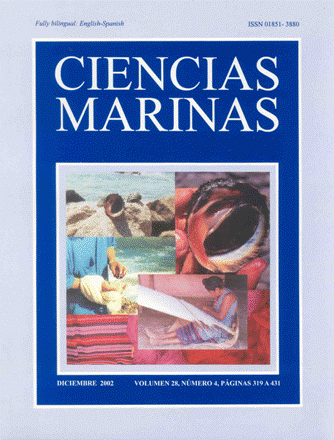Histochemical characteristics of the vitellogenic oocytes of the bluefin tuna, Thunnus thynnus L.
Main Article Content
Abstract
Very little information is available with respect to dynamic aspects of oocyte development and to yolk composition of tuna species. Since histological approaches can offer considerable information about the ovarian development of fish, and because different cytochemical/immunohistochemical tests are suitable tools for proving the presence of different macromolecules in several organs/tissues/cells, they can be good biomarkers of the reproductive mechanism in fish. The present study investigates the presence and distribution of carbohydrates, proteins, glycoconjugates, lipids, calcium, iron and vitellogenin in the bluefin tuna, Thunnus thynnus oocytes during the synthesis of yolk (globules and granules) in the vitellogenic phase. During the initial vitellogenic phase, oocytes (diameter: 249 ± 21.87 mm) contain oil globules (or vacuoles) which consist exclusively of neutral lipids. During this phase very small yolk granules appear around the cytoplasm. Glycolipids, phospholipids, glycoproteins (Nacetyl- D-galactosamine –GalNAc– sugar residues), calcium, proteins rich in tyrosine, tryptophan, lysine, arginine, cysteine and cystine, as well as vitellogenin are the main constituents of the yolk granules and the follicular envelope of these real vitellogenic oocytes (diameter: 386 ± 79.04 mm). The intergranular cytoplasm of the vitellogenic oocytes also contain glycogen and glycoconjugates with Mannose –Man– and/or Glucose –Glc–; N-acetyl-D-galactosamine –GalNAc–; L-Fucose –Fuc– and Nacetyl- D-glucosamine –GlcNAc– and/or sialic acid –NANA– sugar residues. The zona radiata is mainly composed of proteins; in this cellular layer, scarce neutral glycoproteins and lipids (phospholipids/glycolipids) are also present.
Downloads
Article Details
This is an open access article distributed under a Creative Commons Attribution 4.0 License, which allows you to share and adapt the work, as long as you give appropriate credit to the original author(s) and the source, provide a link to the Creative Commons license, and indicate if changes were made. Figures, tables and other elements in the article are included in the article’s CC BY 4.0 license, unless otherwise indicated. The journal title is protected by copyrights and not subject to this license. Full license deed can be viewed here.

